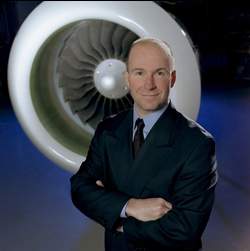Leeham News and Analysis
There's more to real news than a news release.
Odds and Ends: Tax breaks and job guarantees; New airline analysis blog
Feb. 17, 2015: Tax breaks and job guarantees: Boeing’s two largest unions in Washington State appear to be making headway this legislative session to get a bill on the floor for a vote that would retroactively tie 2013 tax breaks to a guarantee of jobs.
It’s less likely that the legislation will include a minimum wage component.
The tax breaks, hastily approved by the Legislature in November 2013, provided for $8.7bn in tax breaks to 2040 in return for Boeing locating the 777X assembly line and wing production in Everett (WA). The tax breaks are not only for Boeing, but available across the supply chain.
But there were no job guarantees, SPEEA and the IAM 751 warned legislators, and without them in the bill, they predicted Boeing would move jobs out of state.
That’s exactly what happened.
Playing number games with the A380
Feb. 15, 2015: Orders for the Airbus A380 have been slow, almost glacial, since the program was launched in 2000. Despite a 20-year forecast then and every year since by Airbus that suggests there is a need for 1,200-1,700 Very Large Aircraft (including freighters), sales of the A380 and Boeing’s 747-400/8 have never reached a point that support the forecast.
Airbus’ latest forecast now is for around 1,500 VLAs, including freighters.
Slow sales hang over the prospect of developing an A380neo. We concluded last year that Airbus had to proceed with the neo in order to spur sales. The commercial viability is a matter of great debate, but Airbus Commercial CEO Fabrice Bregier said last month Airbus will produce a neo, and even stretch the airplane.
Aviation consultant Richard Aboulafia, a critic of the A380 from the get-go, thinks Airbus would be nuts to launch a neo. At the Pacific Northwest Aerospace Alliance conference last week in Lynnwood (WA), in the heart of Boeing country, Aboulafia renewed his decades-long criticism of the airplane.
PNAA Conference: Airbus says A320 cancellations not as bad as numbers suggest
Feb. 12, 2015: Simon Pickup, Strategic Marketing Director, Airbus, took issue (no surprise there) with Boeing’s Randy Tinseth, VP Marketing, at the Pacific Northwest Aerospace Alliance conference today in Lynnwood (WA), and Tinseth’s barb that Airbus had a record year of 340 cancellations.
One hundred fifty of the A320ceo cancellations were swaps to A320neo orders, so the numbers weren’t as bad as numbers appeared, Pickup says. Read more
Boeing 757 MAX: why its operating economics does not work
By Bjorn Fehrm
Introduction
Feb 12, 2015: In a series of articles during the autumn we covered the replacement scenarios for Boeing’s 757-200 when used for long haul passenger operations. The series also included an interview with Boeing’s head of new airplane studies, Kourosh Hadi, director of product development at Boeing where he outlined what Boeing studied and why.
This week The Wall Street Journal published an article portraying that Boeing seriously considered launching a re-engined 757 as a response to Airbus A321LR. Boeing has since vehemently denied the story and we have given the reasons why it does not make sense for Boeing.
As a complement we show the operational economical analysis that we did at the time of our 757 articles, now updated to the exact modifications suggested by The WSJ, a new engine and new winglets paired with modern avionics.




 , it was announced today
, it was announced today